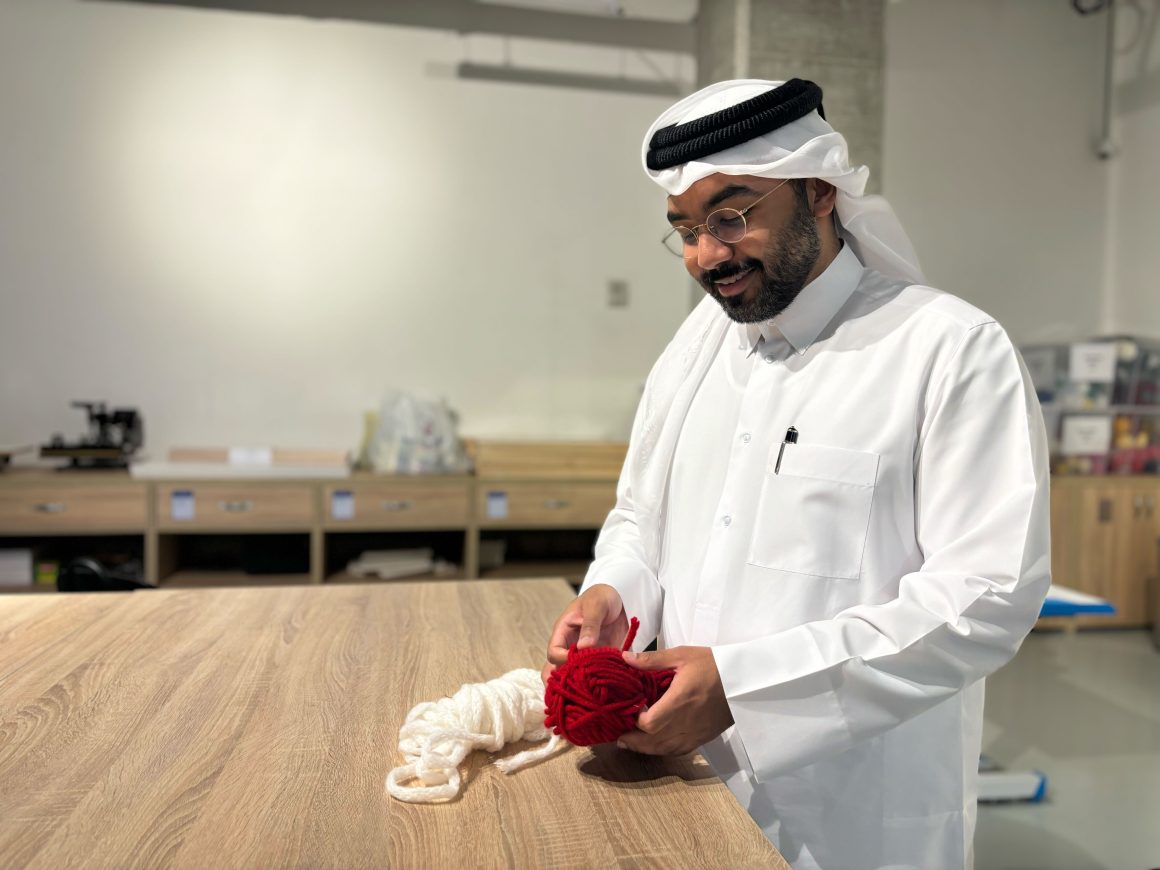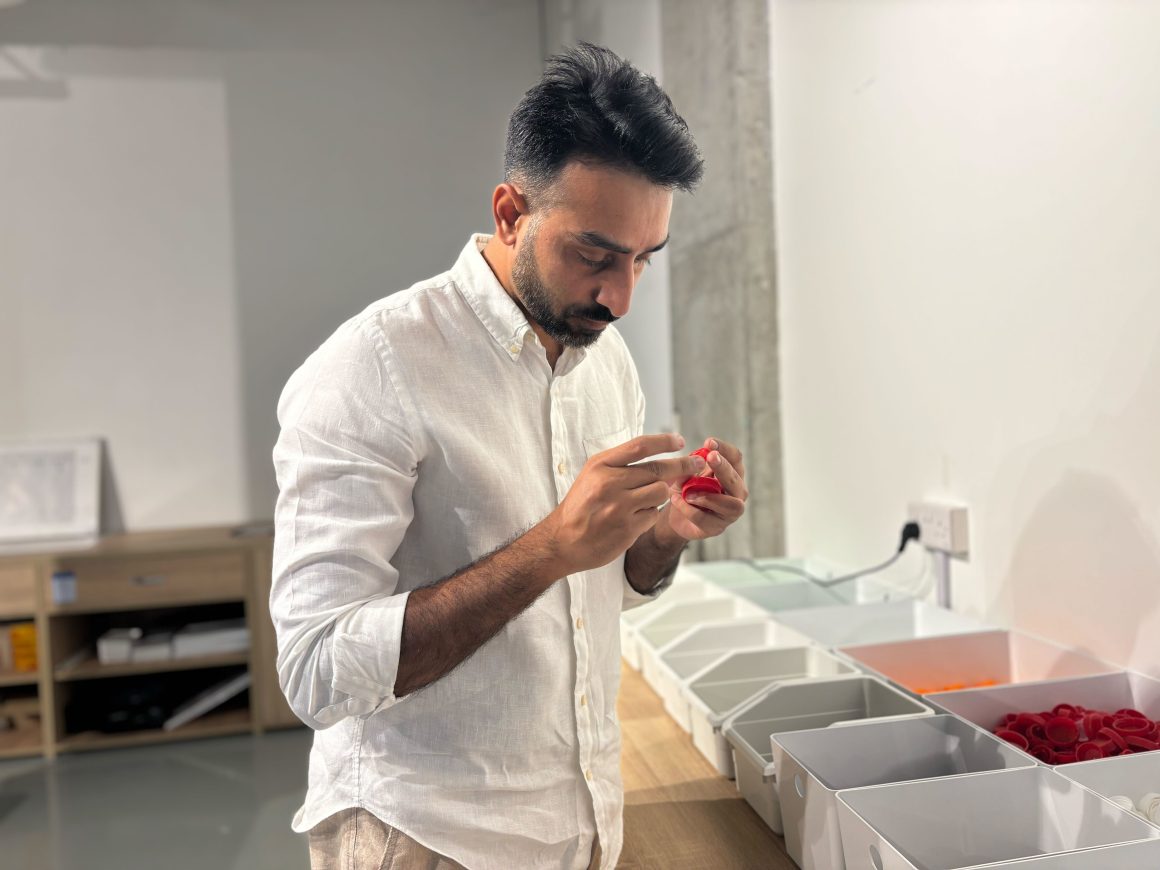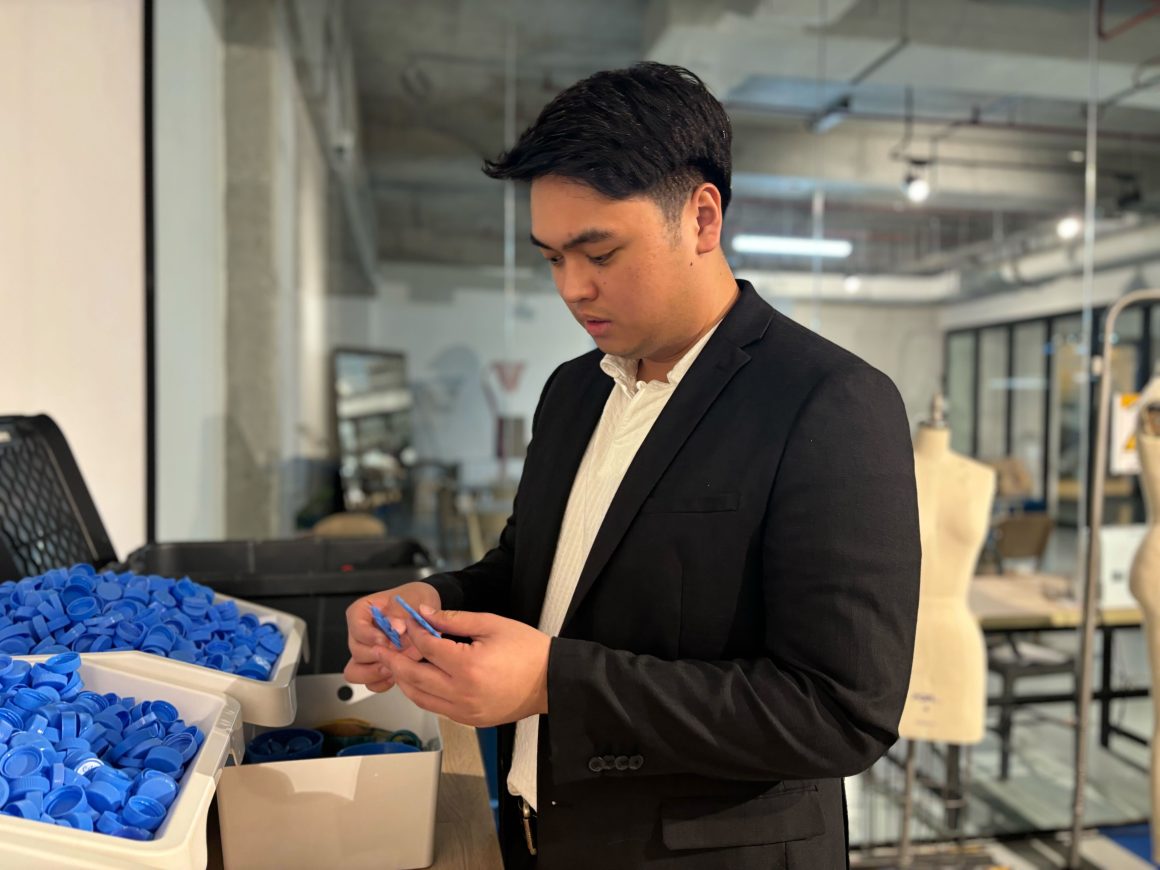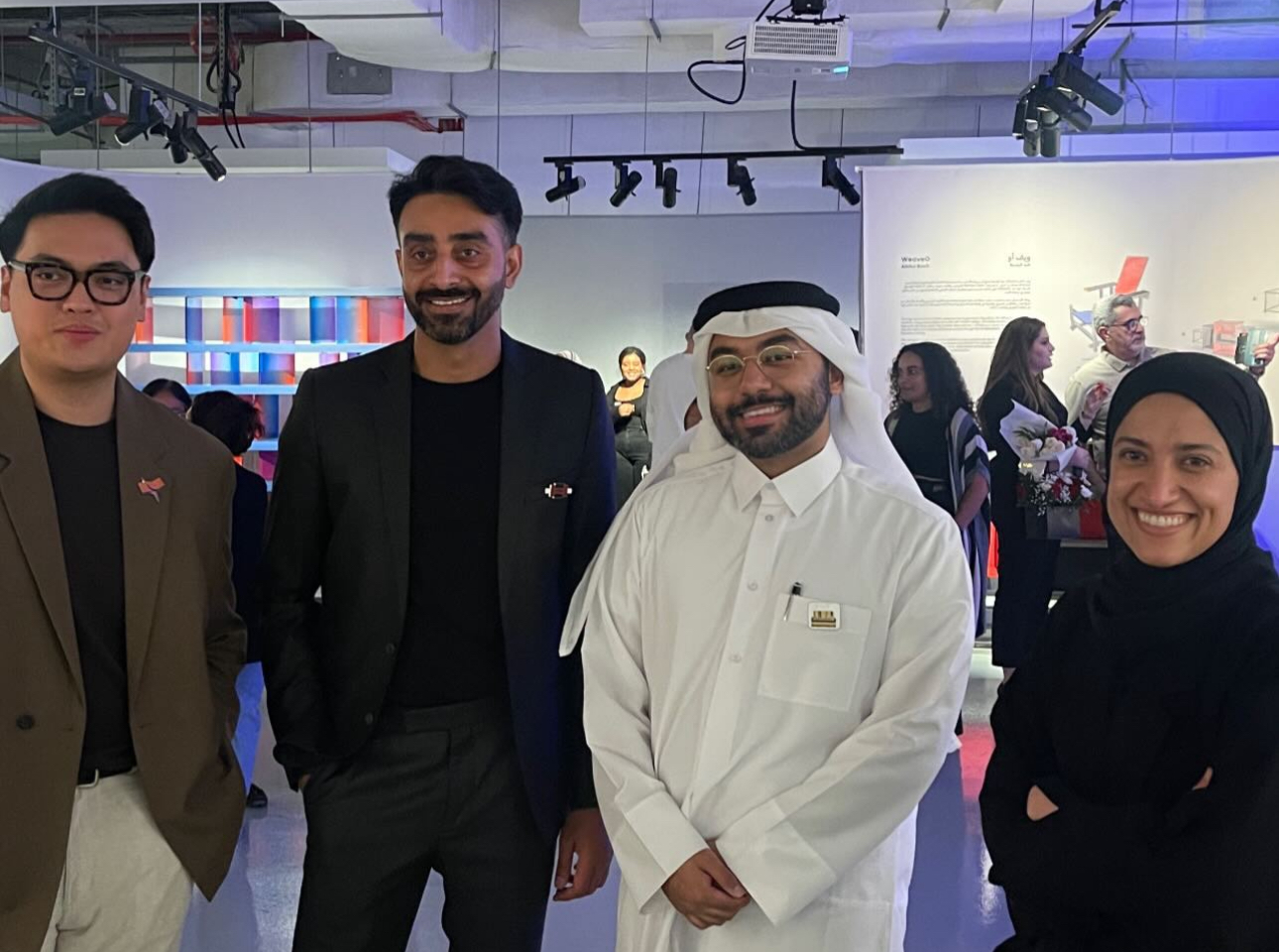The Zwara exhibition at M7 featured furniture designs by Qatar’s four up-and-coming talents who blended traditional influences with modern innovation.
Doha News attended the grand unveiling of the fourth edition of the Zwara exhibition at M7, marking the culmination of a ten-month mentorship supporting this year’s cohort of up-and-coming designers.
Held at M7, a Qatar Museums (QM) entity that supports the Zwara programme, the event transformed the Learning Space into a showcase for the original furniture designs of four up-and-coming talents.
Mohammed Saad Al Rumaihi, QM CEO, and Maha Al Sulatiti, Director of M7, and other leading figures within the Qatari creative scene attended the launch.
Speaking to Doha News, Al Sulaiti explained that this year’s edition draws inspiration from the ‘Masterpieces of Furniture Design’ exhibition, which was held at M7 last year in collaboration with Germany’s Vitra Design Museum.
At M7, “our focus is not just on fashion, but we focus on all aspects of creativity and design,” she said, adding that design serves as a powerful platform for both the nation and its individuals to express themselves.
This year’s line-up of designers includes Hammam Al Abdulla, a Qatari interior designer and QM exhibition designer, who presented visitors with his ‘Nusj’ chair, a piece which straddles the boundaries of Qatari heritage and Western modernist influences.

‘Nusj’, which means to weave, presents a counterweight to the pushes towards modernisation through reinforcing traditional motifs and incorporating local materials.
“My first approach was looking to Marcel Breuer for inspiration and taking a Western approach to my design,” Al Abdulla told Doha News.
In 1925, Breuer introduced the Wassily armchair to the world. Inspired by the lightness and strength of the first bicycle he bought, Breuer’s Wassily was self-styled as his “least artistic, the most logical, the least ‘cosy’ and the most mechanical” creation.
“The European Modernist movement was a rejection of arts and crafts and instead focused on line, form and colour within art. But in my context as a Qatari, our landscape is the antithesis of that – we prioritise social gatherings, comfort and aesthetics,” Al Abdulla added.
Al Abdulla’s piece reinterprets Breuer’s tubular steel design with asymmetrical lines and a low profile, reflecting the region’s traditional seating arrangements. It also features woven textiles inspired by the Qatari Al Sadu weaving tradition.
This Qatari heritage staple, featuring distinctive red, white, and black motifs, decorates homes across the Gulf state, including majlises, rugs, and fashion accessories. This rich tradition also influenced the final creation of Abdul Basit, Al Abdulla’s colleague and interdisciplinary designer.
Basit’s ‘WeaveO’ console is inspired by Gerrit Rietveld’s early 20th-century ‘Red Blue Chair’. His piece also reflects his design philosophy of reconsidering the role of cultural heritage within contemporary design.

“When I came to Qatar, my first influence as a designer came from the National Museum of Qatar. That’s where I really saw how Qatar presents its culture,” Basit told Doha News. He described the impact of his internship at the museum’s outreach department, where he was exposed to informal documents related to gallery subjects, and began exploring local textiles, particularly Al Sadu patterns.
“I saw these patterns not only here but back in the subcontinent, where I’m from. It inspired me to think about how they could be translated from something 2D, like fabric, into 3D forms,” Basit said.
Basit’s exploration of how traditional textiles were used in Bedouin life, from camel saddles to tent interiors, sparked the concept behind ‘WeaveO’. His console piece draws from the intricate geometric motifs of Al Sadu, but brings them into modern form by combining traditional weavings with contemporary design elements from the Dutch art movement.
Design possibilities, without constraint
Before Wednesday’s launch, Doha News caught up with the designers to discuss their journeys throughout the programme.
“The timing of this programme aligned perfectly with my journey as a furniture designer. And, since this is the first furniture edition of Zwara, it was important for me to be a part of this transformative moment in local design,” Galyiah Almohannadi, an interior and furniture designer, told Doha News.
Her ‘Saraab’ piece is an experimental bookcase that invites interaction with its rotating structures. Inspired by Charlotte Perriand’s iconic ‘Bibliothèque,’ Al Mohannadi reinterprets bookshelf design with locally sourced polychromatic glass.
‘’Saraab’ means mirage in Arabic, which aligns with the collection concept of engaging users through a journey of imagination and exploration,” she explained.
Despite her design being influenced by Perriand, Al Mohannadi emphasised the importance of cultural identity.
“A sense of place identity always prevails. It’s about integrating the past with the present while respecting our cultural roots,” she said.
Roots in the essence of being a designer were crucial for this year’s cohort, with the week-long incubation at the Vitra Design Museum in Germany deeply enriching their perspective.

“Being at Vitra was like being thrown back in design school,” Stephen Amoyo, a multidisciplinary designer, said to Doha News.
“The experience was a deep dive into design fundamentals,” he added, “without the constraints of budgeting and procurement.”
His ‘The Waiting Chair’ is a collision of the design philosophies of Virgil Abloh and Jean Prouvé. This contemporary chair fuses Prouvé’s signature silhouettes with Abloh-esque creativity.
Further explaining the collaboration of ideas, Amoyo also told Doha News that his piece is not just a representation of himself, but a reflection of his broader creative community.
“Personally, I feel like what I have produced is an amalgamation of my group, my tribe, and what we represent,” Stephen Amoyo said. “It’s not just my work; it’s about bringing together different forms of art – dancers, photographers, architects – and learning from each other.”







